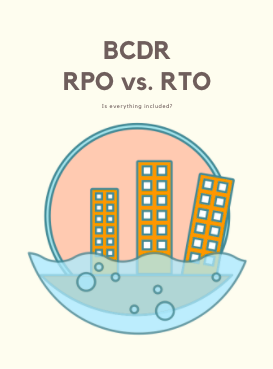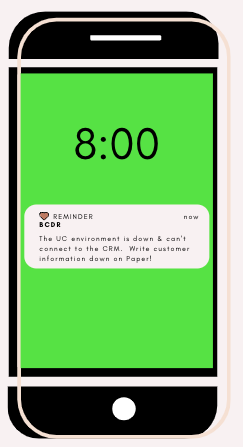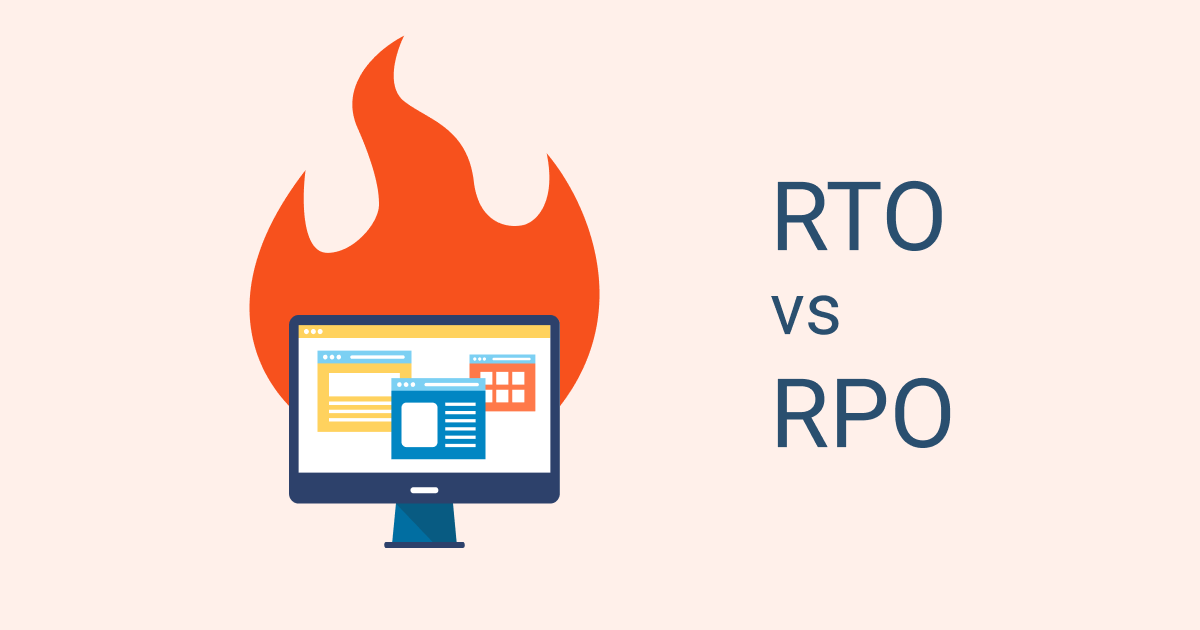RPO vs. RTO what you need to know
Recovery Point Objective (RPO) and Recovery Time Objective (RTO) should not be in the rear-view mirror for 2021 as organizations look to adjust their BCDR plans post Covid.
RPO Explained: Recovery Point Objective (RPO) is defined as the total amount of data that can be lost after a recovery from a failure. This essentially limits how far to roll back in time during recovery and defines the maximum allowable amount of lost data measured in time from a failure occurrence to the last valid backup.
Recovery point objective (RPO) is defined as the maximum amount of data – as measured by time – that can be lost after a recovery from a disaster, failure, or comparable event before data loss will exceed what is acceptable to an organization. An RPOs determines the maximum age of the data or files in backup storage needed to be able to meet the objective specified by the RPO, should a network or computer system failure occur.

For most organizations, their RPO & RTO are solid, well defined in their Cloud Native application environments. However, there are some who need to make modifications or broaden the scope of “Cloud.” More cloud applications, tools and business infrastructure moved to a virtual world during the pandemic. Contact Center & Unified Communications moved to the cloud quickly replacing legacy Calle Centers and PBX environments respectively. This was a big win for many IT organizations, however Data, especially in these communications deployments moved off-site to both internal cloud instances and external vendor environments. Areas to consider in this new environment:
- How do we add Vendor Contact Center & Omnichannel communications with our Data stores into our BCDR?
- How long can we continue if our Cloud VOIP environment went off-line?
- What is the RTO objective?
- What is the RPO objective?
- How will traffic & data be routed in the interim?
- What is essential for backup?

Some of these questions may seem trivial, however they are not if you’re in the Insurance, Financial Services or even Healthcare verticals. Call and Customer analytics are critical and if the Virtual Contact Center is in production but it can’t capture or retrieve necessary information easily within your CRM or other SaaS tools, what can you live with? Sure, the environment has failsafes to route calls to external Telephone Number, but there is no customer history, recording of inbound requests and more.

Another one often overlooked in the BDCDR plan is multi-cloud for evaluation. Why? Most likely you have solved if cloud region one fails and cloud region 2 takes over…. pretty easy right? However, have you considered the overall Cloud Connectivity Plan? You will want to consider how remote users or customers connect to your failover location in multi-cloud and would that impact egress charges leaving your backup region temporarily. Pulling data storage in large troves of capacity could burden your next invoice so you’ll want to be sure the architecture supports both cost and speed to recovery. Several options exist however the remote user connections will be the hardest to define and expect potential latency increase.
Consider a WAF to mitigate vendor lock-in or be agnostic to your Cloud environment. Read more here about What is a WAF or What is AWS WAF?
We support, design, and help plan for many disasters more as an insurance policy which must be cashed in at any given moment. Everything has or is moving to the cloud for your business, we always advise to leave no stone unturned.
Related Posts
1 Comment
Comments are closed.
Recent Posts
- AI in CCaaS RFPs: Essential Features for Next-Gen Contact Centers
- The Future of CCaaS: How AI Will Transform Contact Centers by 2035
- Tier 1 vs Tier 2 vs Tier 3 ISPs Explained: The Complete Guide for IT Leaders
- America’s AI Action Plan 2025: What CEOs, CIOs, and CFOs Need to Know
- The AIoT Advantage: Harnessing the Convergence of Artificial Intelligence and the Internet of Things
Archives
- September 2025
- August 2025
- July 2025
- June 2025
- May 2025
- April 2025
- March 2025
- February 2025
- January 2025
- December 2024
- November 2024
- October 2024
- September 2024
- August 2024
- July 2024
- June 2024
- May 2024
- April 2024
- March 2024
- February 2024
- January 2024
- December 2023
- November 2023
- October 2023
- September 2023
- August 2023
- July 2023
- June 2023
- May 2023
- April 2023
- March 2023
- February 2023
- January 2023
- December 2022
- November 2022
- October 2022
- September 2022
- August 2022
- July 2022
- June 2022
- May 2022
- April 2022
- March 2022
- February 2022
- January 2022
- December 2021
- November 2021
- October 2021
- September 2021
- August 2021
- July 2021
- June 2021
- May 2021
- April 2021
- March 2021
- December 2020
- September 2020
- August 2020
- July 2020
- June 2020
Categories
- All (19)
- Satellite (1)
- Artificial Intelligence (8)
- Travel (1)
- Sports (1)
- Music (1)
- News (277)
- Design (3)
- Clients (12)
- Uncategorized (1)
- Tips & tricks (25)
- Inspiration (9)
- Client story (1)
- Unified Communications (196)
- Wide Area Network (309)
- Cloud SaaS (60)
- Security Services (71)





[…] Conversly, planning for disaster recovery is slightly different as the KPIs look more to RTO and RPO. […]